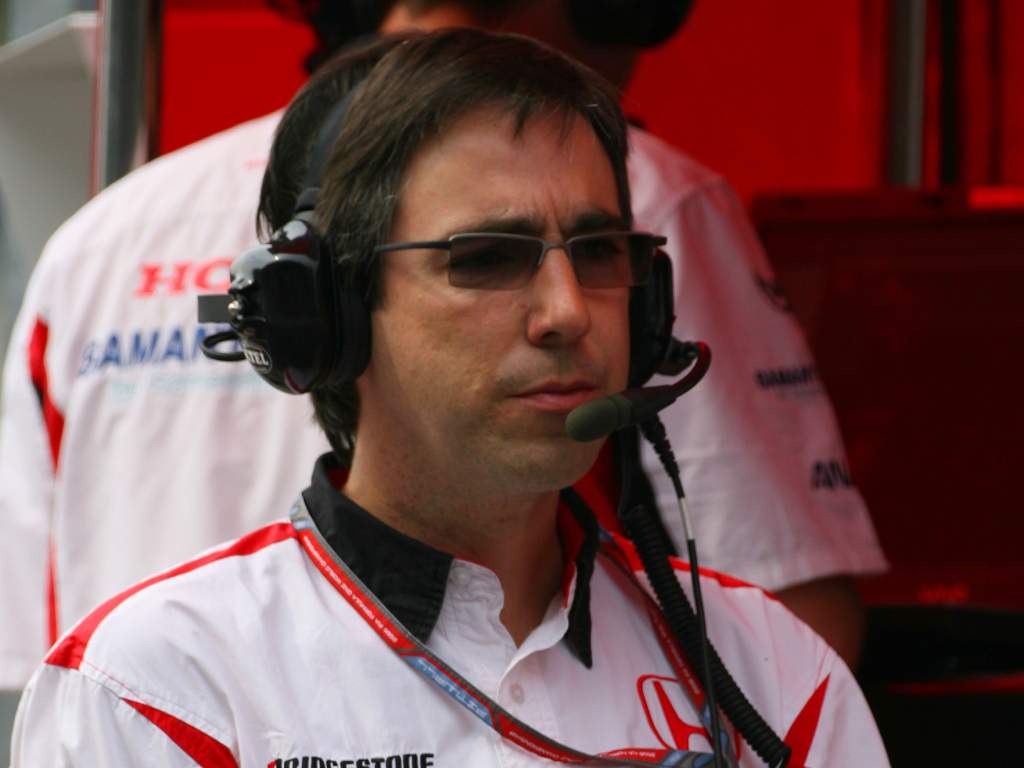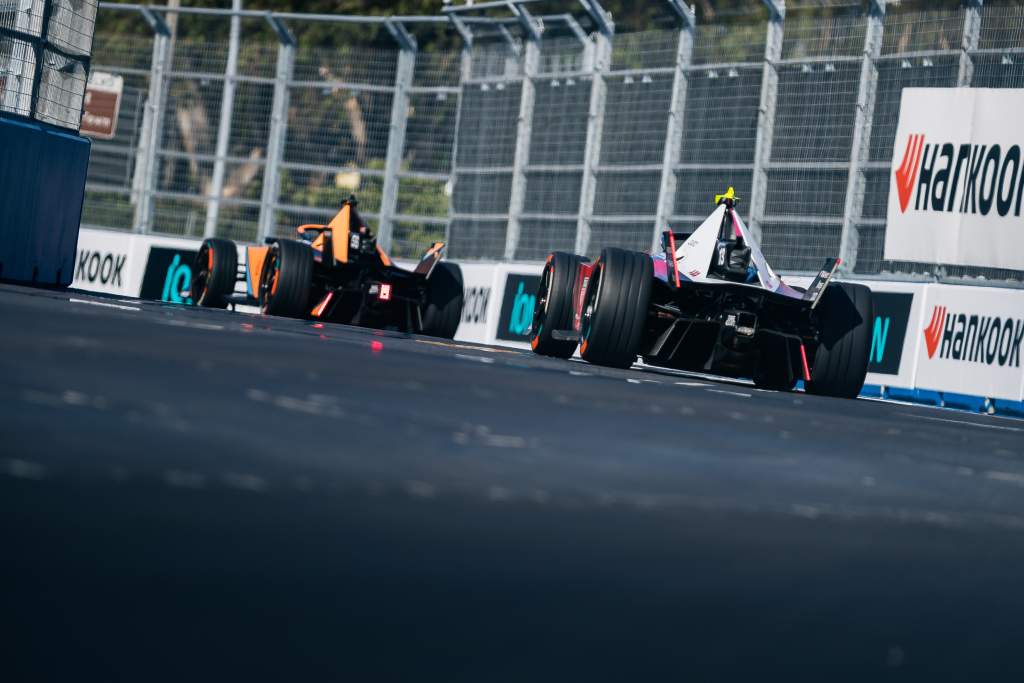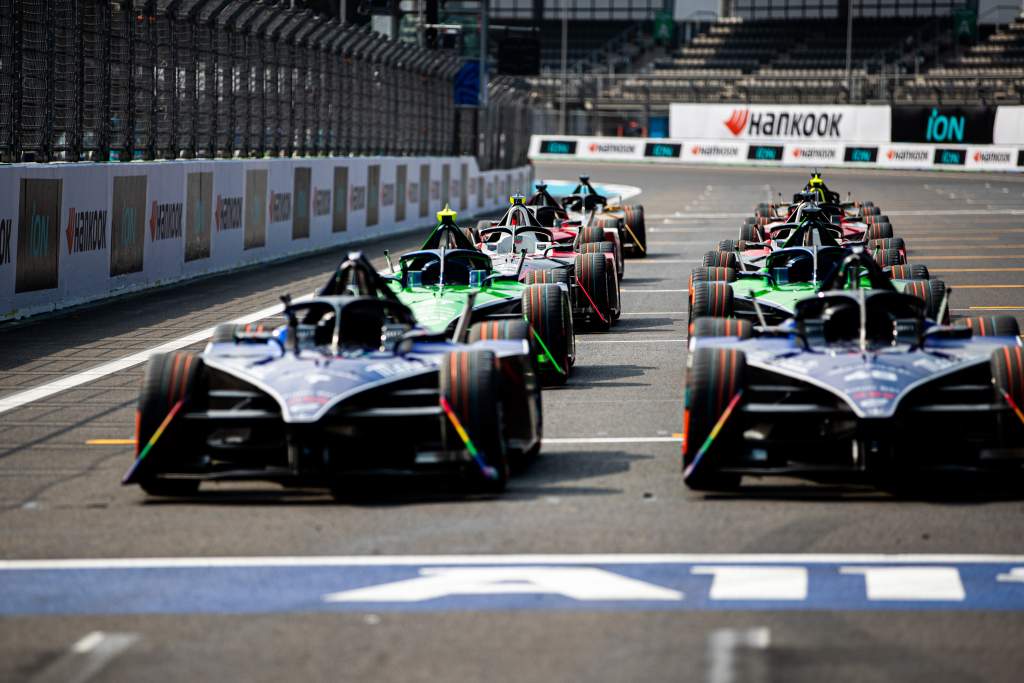A former senior technical figure at McLaren and tech chief at Super Aguri in Formula 1, Mark Preston went on to head the Techeetah team that won three drivers’ titles and two teams’ titles in Formula E. He is now motorsports director at Lola Cars and an occasional contributor to The Race.
I began my career in motorsports while at Monash University in Melbourne. I was a little bored with so much theory, and wanted to do something practical (Formula Student had not been invented yet!).
So I got out the the ‘yellow pages’ and looked up the section called ‘Racecar Manufacturers’, there was one: Borland Racing Developments. The only racecar manufacturer in the country. I got on the phone and asked if I could offer my services as what people call a ‘weekend warrior’ nowadays (students take note that this is how I started my journey to F1).
On my first day, I drew up front and rear roll centres for Mark Skaife’s Formula Holden. It was on a very large piece of drawing paper: yes, a very big piece of paper. I was just learning Pascal (programming language) at Monash and so I immediately thought this would be easy to programme on the computer and so my first piece of software for racing was born.
I returned the next day and continued doing jobs while finishing my Mechanical Engineering degree at Monash. I later learned from Michael Borland that he was surprised when I came back the next day. Seven years later we were leading the 1996 Australian Formula Ford Championship with Jason Bargwanna. Spectrum was the first Australian-built Formula Ford to win the Australian Formula Ford Championship.
Later that year, late at night at one of the final races in that 1996 season I was recommended that I go to the UK to do Formula 1 before I turned 27, and over the next month, I decided to try my luck in the big wide world of motorsports. I turned up in the UK with 10 interviews organised, including McLaren, Ferrari, Arrows and Lola!

I was planning to for two weeks or two years: 25 years later I am still racing in the UK and now at the newly-relaunched Lola.
Why tell this story? I wanted to set the background for the question that I was asked recently: does Formula E need a feeder series?
By the age of 11, kids have absorbed gender roles from society. By 15 they have chosen GCSEs and are generally on a set path and it’s too late. This is why it’s important to have role models that young people can look up to and aspire to emulate. If not, it is hard to change direction later in life. This is true of the work being done with The Hamilton Commission, W Series and now with the Girls on Track and More than Equal initiatives. Without role models, it is difficult to begin the journey towards something new and different from the norm.
With Formula E well and truly integrated into the FIA’s register of world championships, we now have the pinnacle of electric racing for young drivers to aspire to. But what is the right route to get there?
How does a young aspiring driver want to target this?

After chatting with Greg Graham from the BRSCC, it became clear that there is a need for a different route to Formula E. The BRSCC recently announced its grassroots electric single-seater programme specifically aimed at those racing enthusiasts who have embraced the shift to electric cars in full and do not necessarily want to put their effort into fossil-fuelled motorsports given their supporters are mostly part of this very energy transition.
“Since launching our Formula Foundation fully electric single-seater programme a few months ago, we have been delighted with the level of interest shown and by the volume of enquiries received,” said Graham, BRSCC’s head of formulae development.
“When quietly canvassing the motorsport world ahead of the project being launched, we were already enthused by the positive reactions from many of the people and companies we initially shared our ideas with. Whilst developing the FF-E1 race car from concept to fully working prototype we remained confident that the project was one that would in turn generate genuine commercial enquiries… and that has proven to be the case.
“One of the most pleasing aspects when evaluating the enquiries we are receiving is that a large percentage are coming from people who genuinely aspire to race EVs, and who recognise that there are very few affordable options available to them.
“Many of those same enquiries are from what we’d categorise as potential ‘career racers’, and not only from hobby racers keen to experience EV competition. Another very pleasing aspect for us is the number of enquiries we’re receiving from around the world, highlighting the fact that non-elite level EV racing opportunities are as scarce in other markets as they are in the UK.”
From a technical point of view, electric racing cars are very different from their internal combustion counterparts. Firstly the electric powertrains have a “power cap”, meaning that the cars are very equal over one lap of qualifying, but in the race it becomes a different game with energy efficiency and management all-encompassing. A totally different driving experience, which some may argue creates more overtaking than other racing series (see Antonio Felix da Costa in Monaco and Cape Town)!
I have always been a proponent of the track-to-road relevance: this is a really good example of such. As road cars start to have larger levels of regeneration capability including four-wheel regenerative braking and similar tools to the race cars, more interesting features will develop that mimic the track on the road. Regeneration paddles on the steering wheel are a great example. If you haven’t driven a road-going car with large regeneration capability and paddles then you should experience it. When someone says to you that they miss changing gears, I would say “just drive faster, it allows your brain to have more cognitive capacity to concentrate on going more quickly”!
Formula E has the capacity, with the front powertrain in Generation 3, to also add unique features such as ‘4WD launch mode’ and the possibility to experiment with push-to-pass type options with the front powertrain. The new features of the sport will then drive more crossover with road-going cars and provide a whole different experience from internal combustion engines.

Learning to drive these complex new electric vehicles requires experience and knowledge of their inner workings. It shows in Formula E as it can take quite a few races for a new driver to retrain themselves for these very different cars.
Given that by the time many of the 11-years-olds get to the upper levels of motorsports many countries in the world will have banned fossil-fuelled vehicles, the whole game will have changed.
Nyck de Vries has found an interesting new route to Formula 1 – having not been promoted after his Formula 2 title, he then won the season seven Formula E crown before getting his break in F1 for 2023. Sometimes it’s worth doing something different than the norm and finding your own path to where you want to go.
In summary, I believe that Formula E needs, and will get, its own feeder ladder, if only through the interest of young drivers who come from a different background to those who potentially grew up around a family that may have been influenced more heavily by a past in motorsports.






